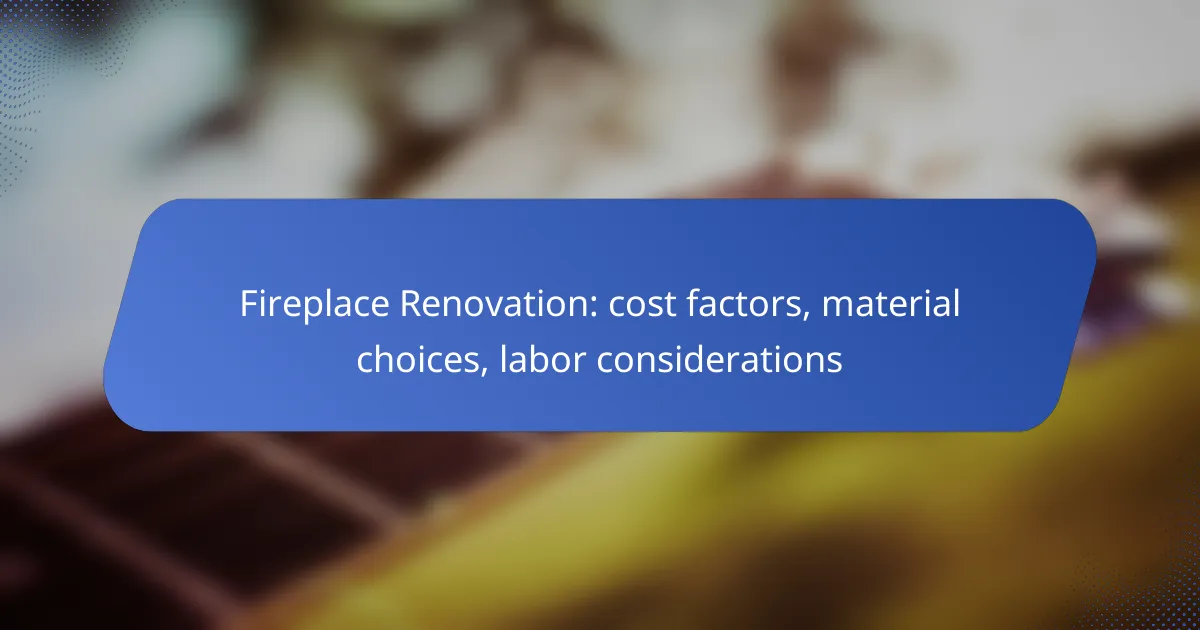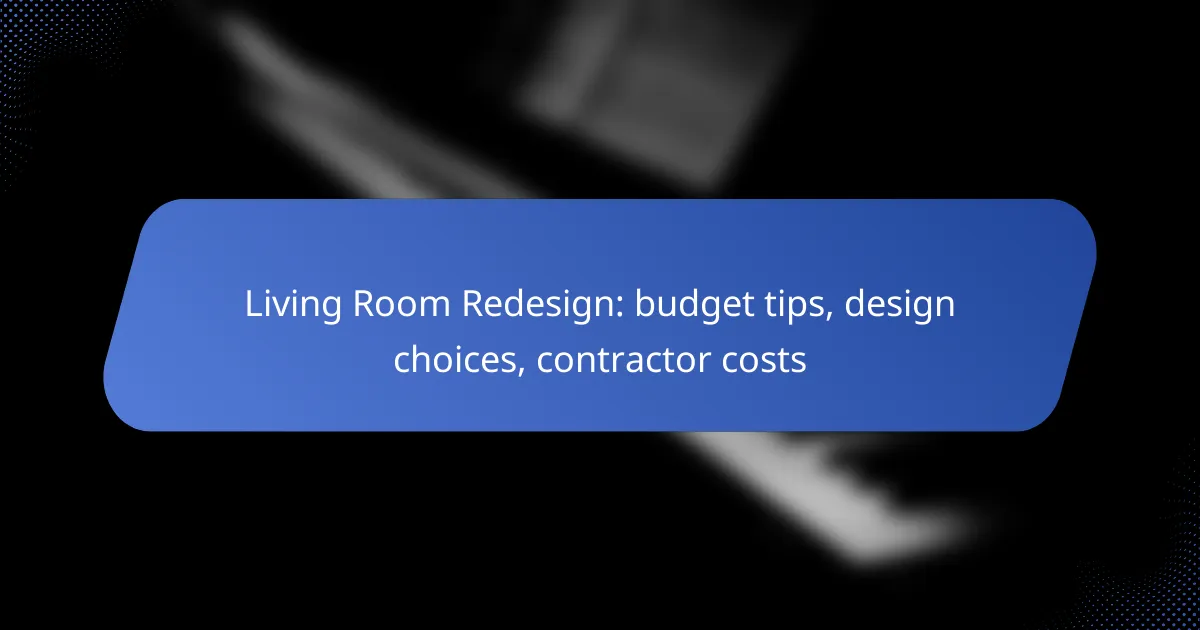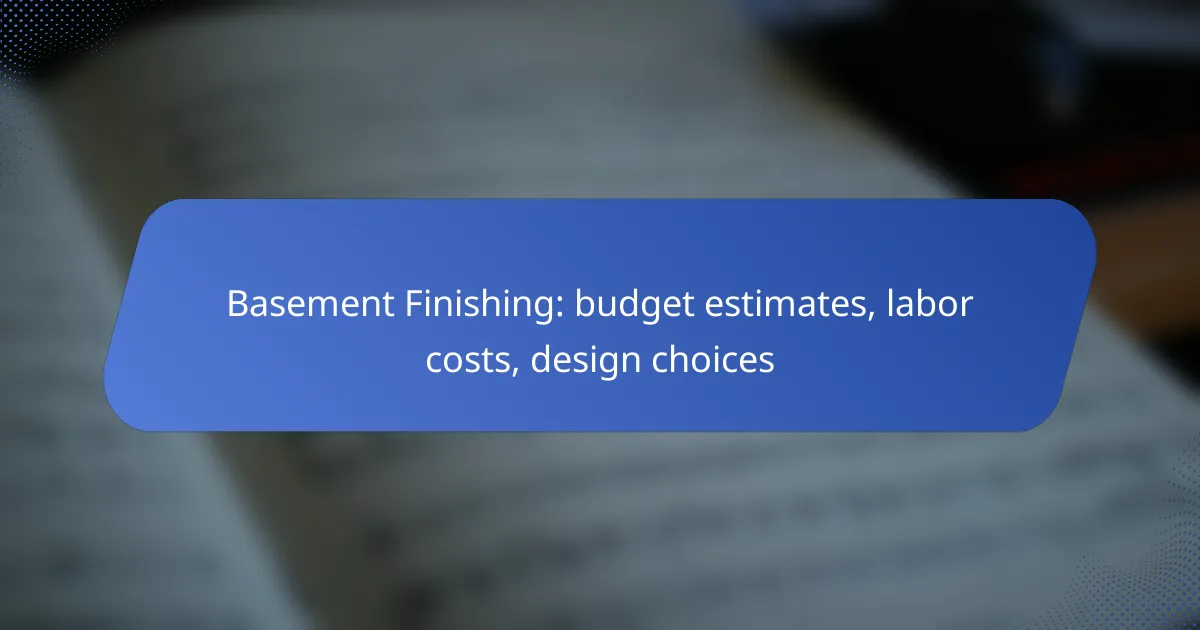Renovating a fireplace can be a rewarding investment, but costs can vary widely based on project scope, material choices, and labor considerations. Homeowners should anticipate expenses ranging from a few hundred to several thousand pounds, influenced by the specific requirements of their renovation. Selecting the right materials, such as brick, stone, tile, or metal, is crucial for achieving both aesthetic appeal and durability, while skilled labor is essential to ensure safety and quality throughout the process.

What are the costs of fireplace renovation in the UK?
The costs of fireplace renovation in the UK can vary significantly based on several factors, including the scope of the project, materials used, and labor costs. Homeowners should expect to spend anywhere from a few hundred to several thousand pounds, depending on their specific renovation needs.
Average renovation costs
On average, fireplace renovations in the UK can range from £500 to £5,000. Simple updates, like painting or adding a new mantel, may cost less, while extensive renovations involving structural changes or high-end materials can push costs higher. Budgeting for unexpected expenses is wise, as renovations often reveal underlying issues.
Factors influencing costs
Several factors can influence the overall cost of a fireplace renovation. The type of renovation—whether cosmetic or structural—plays a significant role, as does the condition of the existing fireplace. Additionally, the choice of materials, such as stone, brick, or tile, can greatly affect the final price.
Labor costs can also vary based on the complexity of the work and the experience of the contractors. Hiring skilled tradespeople may increase upfront costs but can lead to better quality and longevity of the renovation.
Cost breakdown by material
The choice of materials is crucial in determining renovation costs. For instance, a basic brick fireplace might cost around £500 to £1,000 to renovate, while a stone or marble finish can range from £1,500 to £4,000. Other options, like custom mantels or high-efficiency inserts, can add significantly to the overall expense.
Here’s a rough breakdown of material costs:
- Brick: £500 – £1,000
- Stone: £1,500 – £4,000
- Tile: £800 – £2,500
- Custom Mantels: £300 – £1,500
Regional cost variations
Costs for fireplace renovation can vary by region in the UK. Generally, urban areas like London may see higher prices due to increased demand and labor costs. In contrast, rural areas might offer more competitive pricing, but the availability of skilled labor can be limited.
Homeowners should research local contractors and compare quotes to ensure they receive fair pricing for their specific region. Additionally, checking for any local regulations regarding fireplace renovations can help avoid unexpected costs.

What materials are best for fireplace renovation?
The best materials for fireplace renovation depend on aesthetics, durability, and heat resistance. Common choices include brick, stone, tile, and metal, each offering unique benefits and visual appeal.
Popular materials in the UK
In the UK, brick and stone are traditional favorites for fireplace renovations due to their classic appearance and excellent heat retention. Modern options like ceramic tiles and cast iron are also gaining popularity for their versatility and ease of maintenance.
Additionally, reclaimed materials are increasingly sought after for their rustic charm and sustainability. Homeowners often choose materials that complement their existing decor while ensuring safety and functionality.
Durability of different materials
Durability varies significantly among fireplace materials. Brick and stone are highly durable, capable of withstanding high temperatures and wear over time. They require minimal maintenance, making them ideal for long-term use.
In contrast, materials like tile can chip or crack under extreme heat if not properly installed. Metal options, while durable, may require regular maintenance to prevent rust, especially in humid climates.
Cost comparisons of materials
Cost is a crucial factor in material selection for fireplace renovation. Brick and stone typically range from moderate to high prices, depending on quality and sourcing, often costing between £50 to £150 per square meter. Tile can be more affordable, with prices starting around £30 per square meter, but high-end options can exceed £100.
Metal materials, such as cast iron, can vary widely in price, generally falling between £60 to £200 depending on design and brand. It’s essential to balance initial costs with long-term durability and maintenance when making a choice.
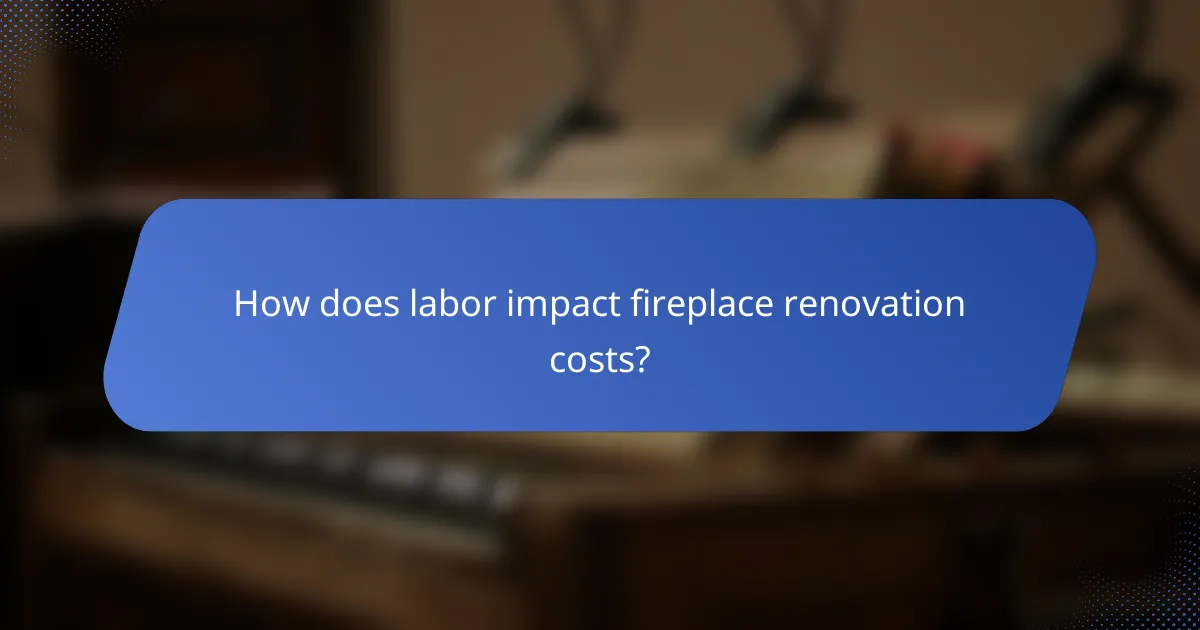
How does labor impact fireplace renovation costs?
Labor significantly influences the overall costs of fireplace renovation, often accounting for a substantial portion of the budget. Skilled tradespeople are essential for ensuring the renovation meets safety standards and aesthetic expectations, which can vary based on the complexity of the project.
Average labor costs in the UK
In the UK, average labor costs for fireplace renovation typically range from £150 to £300 per day, depending on the tradesperson’s expertise and location. For more specialized work, such as masonry or electrical installations, rates can increase significantly, sometimes reaching up to £500 per day.
It’s advisable to obtain multiple quotes from local contractors to ensure competitive pricing. Be aware that labor costs may also fluctuate based on seasonal demand and availability of skilled workers.
Factors affecting labor rates
Several factors can influence labor rates for fireplace renovations, including the complexity of the job, the materials used, and the experience level of the laborers. More intricate designs or custom installations generally require higher-skilled labor, which can drive up costs.
Geographic location plays a crucial role as well; urban areas often have higher labor costs compared to rural regions. Additionally, the time of year can affect availability and pricing, with peak renovation seasons typically seeing increased rates.
Hiring vs. DIY considerations
Deciding between hiring professionals and taking a DIY approach depends on your skill level and the project’s complexity. While DIY can save on labor costs, it may lead to higher expenses if mistakes occur, requiring professional correction.
For straightforward tasks, such as painting or minor repairs, DIY might be feasible. However, for structural changes or installations involving gas or electrical components, hiring a qualified contractor is essential to ensure safety and compliance with regulations.
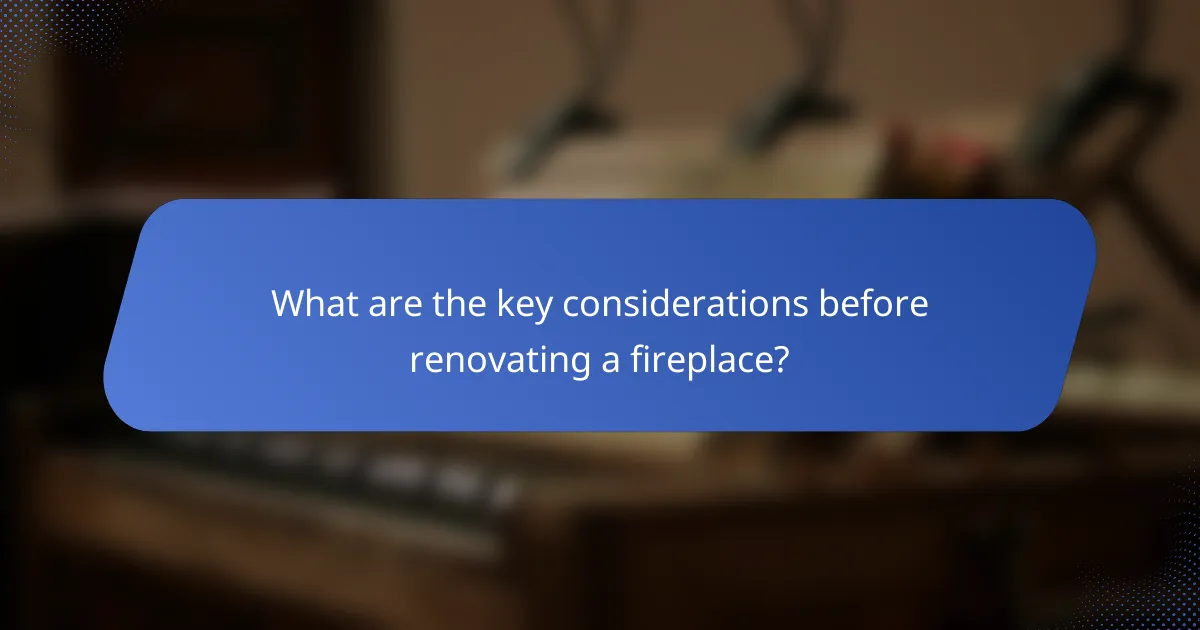
What are the key considerations before renovating a fireplace?
Before renovating a fireplace, it’s essential to evaluate factors such as building regulations, safety standards, material choices, and labor costs. These considerations will help ensure a successful and compliant renovation that enhances both functionality and aesthetics.
Building regulations in the UK
In the UK, fireplace renovations must comply with specific building regulations that govern structural integrity, ventilation, and fire safety. It’s crucial to check local regulations, as they can vary by region and may require obtaining permits before starting work.
For example, if you plan to install a new flue or chimney, you may need to ensure that it meets the requirements set out in the Building Regulations Approved Document J. This document outlines standards for the installation of solid fuel and gas appliances, ensuring safe operation and emissions control.
Safety standards to follow
Safety standards are vital when renovating a fireplace to prevent hazards such as fire risks and carbon monoxide poisoning. Adhering to standards set by organizations like the British Standards Institution (BSI) can help ensure that your renovation is safe and compliant.
Key safety measures include installing smoke alarms, ensuring proper ventilation, and using fire-resistant materials. It’s advisable to consult with a qualified professional who can guide you through the safety requirements specific to your fireplace renovation project.
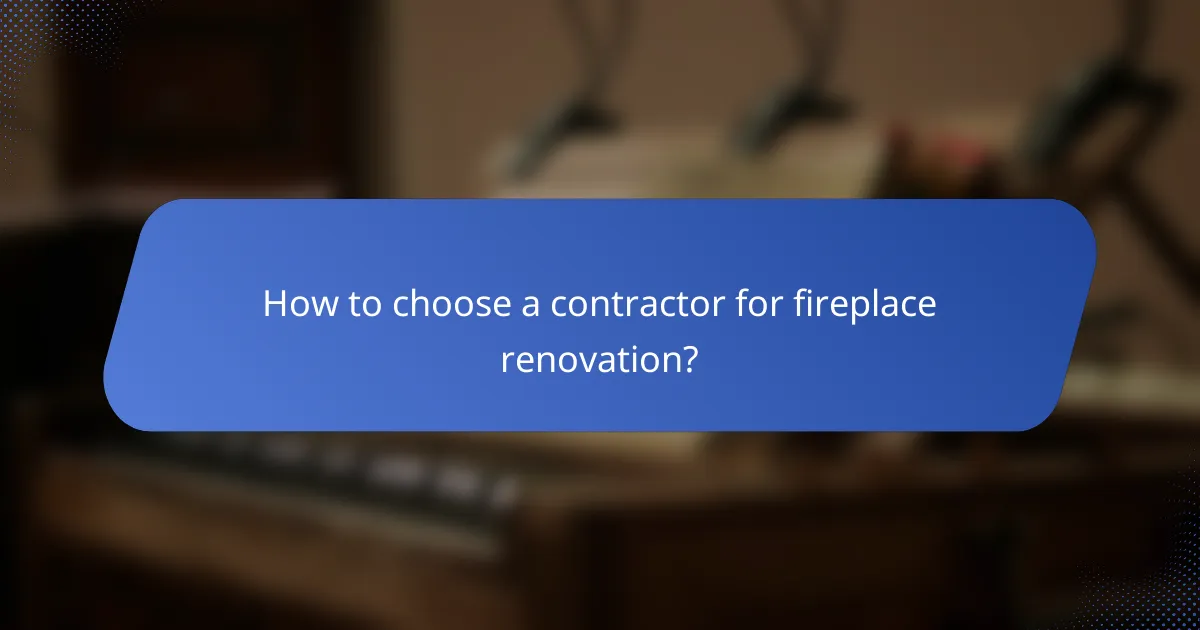
How to choose a contractor for fireplace renovation?
Selecting a contractor for fireplace renovation involves assessing their experience, reliability, and suitability for your specific project. Focus on their past work, customer reviews, and ability to meet your design and budget requirements.
Questions to ask potential contractors
Additionally, ask for references from previous clients and examples of completed projects. This will give you insight into their workmanship and customer satisfaction.
Don’t forget to discuss timelines and payment structures. Understanding how they handle project scheduling and costs can prevent misunderstandings later.
Evaluating contractor credentials
Check if the contractor is licensed and insured, as this protects you from liability in case of accidents. Verify their credentials with local authorities to ensure compliance with regulations.
Look for industry certifications that demonstrate expertise in fireplace installation and renovation. These can indicate a commitment to quality and ongoing education in the field.
Finally, consider their reputation in the community. Online reviews and ratings can provide valuable insights into their reliability and quality of work.

What are the latest trends in fireplace design?
Current trends in fireplace design focus on sustainability, minimalism, and technology integration. Homeowners are increasingly opting for modern, sleek designs that complement contemporary interiors while using eco-friendly materials and efficient heating solutions.
Eco-friendly materials
Eco-friendly materials for fireplaces include options like recycled metal, sustainable wood, and bioethanol. These materials not only reduce environmental impact but also enhance the aesthetic appeal of the fireplace, making it a focal point in the room.
When choosing eco-friendly materials, consider the source and lifecycle of the products. For example, reclaimed wood can add character and warmth, while recycled steel offers durability and a modern look. Additionally, bioethanol fireplaces produce minimal emissions, making them a cleaner alternative to traditional wood-burning options.
Budgeting for eco-friendly materials may vary, with costs typically ranging from moderate to high depending on the quality and sourcing. It’s advisable to consult with local suppliers to explore available options and ensure compliance with any regional regulations regarding materials and emissions.






